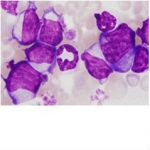Motomi Osato
Paper Information
Chin DW, Watanabe-Okochi N, Wang CQ, Tergaonkar V, Osato M.
Mouse models for CBF leukemia
Leukemia. 2015 Jul 13. doi: 10.1038/leu.2015.181. [Epub ahead of print]
http://www.ncbi.nlm.nih.gov/pubmed/26165235
Highlights
- Core binding factor (CBF) genes are frequently mutated in human leukemias.
- Mouse models have been employed to study the role of CBF alterations in leukemogenesis.
RUNX1 and CBFB are among the most frequently mutated genes in human leukemias. Genetic alterations such as chromosomal translocations, copy number variations and point mutations have been widely reported to result in malfunction of RUNX transcription factors. Leukemias arising from such alterations in RUNX family genes are collectively termed core-binding factor (CBF) leukemias. Although adult CBF leukemias generally are considered favorable risk group as compared to other forms of acute myeloid leukemia, the 5-year survival rate remains low. An improved understanding of the molecular mechanism for CBF leukemia is imperative to uncover novel treatment options. Over the years, retroviral transduction-transplantation assays, and transgenic, knock-in and knock-out mouse models alone or in combination with mutagenesis have been employed to study the roles of RUNX alterations in leukemogenesis. Although successful in inducing leukemia, the existing assays and models possess many inherent limitations. A CBF leukemia model which induces leukemia with complete penetrance and short latency would be ideal as a platform for drug discovery. Here we summarize the currently available mouse models which have been utilized to study CBF leukemias, discuss the advantages and limitations of individual experimental systems and propose suggestions for improvements of mouse models.Leukemia accepted article preview online, 13 July 2015. doi:10.1038/leu.2015.181.

